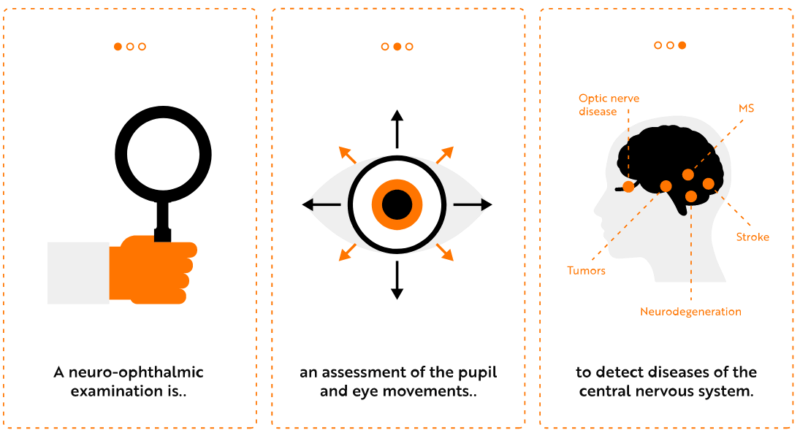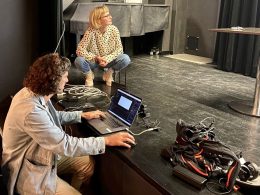A spin-off from Bern's Inselspital is using virtual reality glasses from the gaming sector as a medical diagnostic tool.
In future, this task will therefore be performed by virtual reality glasses and software that MachineMD is developing together with specialists from the Swiss Centre for Electronics and Microtechnology (CSEM).
VR glasses are a high-quality commercial device that was developed for computer games. Two screens show an optical stimulus, while cameras monitor the reactions of the eyes and pupils.
In one of a total of eight tests, one eye is dazzled with a bright surface while the other eye remains dark. Cameras and software register the pupils' reactions to the stimulus - possibly an indication that something is wrong with the signal processing in the brain. Further tests focus on the visual field, how quickly the eyes move or where they look.
Artificial intelligence analyses viewing direction
Understanding where someone is looking is a major challenge, explains Sareh Saeedi from the Swiss CSEM. She has long been involved in the digital analysis of gaze directions and has worked on the software for the glasses.
Unlike a camera, it is almost impossible to tell from the outside what the eye is really looking at - the physiological differences are too great. To solve the problem, the CSEM scientists relied on artificial intelligence, known as machine learning. They trained special software with thousands of images of eyes and the information on which point in space the focus lies. The software then learnt to interpret the gaze correctly on its own.
Synthetic data instead of recordings of people
Processing the training images by hand is time-consuming and error-prone, says Andrea Dunbar, a specialist in artificial intelligence at CSEM. Instead of images of human eyes, images generated by a computer were therefore used for training, so-called synthetic data.
In addition to efficiency and precision, this approach has other advantages: The computer can also generate any number of images of eyes with rare diseases and there is no need for time-consuming clarifications regarding privacy protection.
The first version of the VR glasses is due to be launched on the market in early 2024. The software developed by MachineMD can then generate a report that gives experts or doctors an indication of whether something is wrong. Later, the software will also be able to diagnose diseases such as multiple sclerosis or Alzheimer's.
Source: SRF / MachineMD









